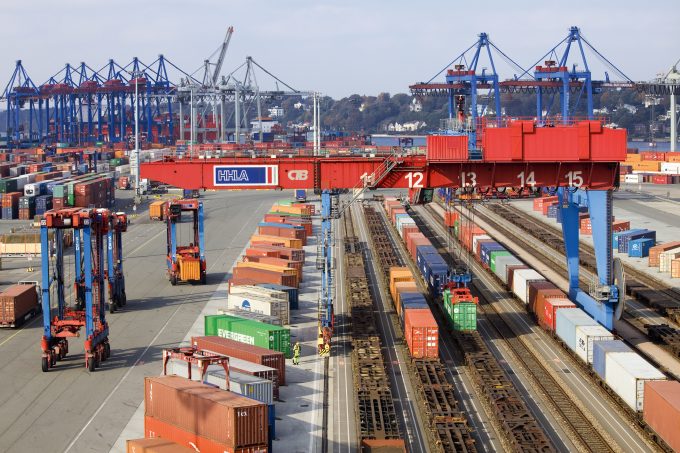TPM24: Shippers hope liner overcapacity will drive rates down – but...
Shippers hoping the burgeoning overcapacity in global liner trades may lead to a prolonged period ...

Despite a reduction in weekly capacity and port calls on the main Asia-Europe trade, both carriers’ customers and suppliers said they were continuing to struggle with the cargo peaks caused by the continuing deployment of ultra-large container ships on the trade.
According to Dynamar data, presented by the analyst’s senior shipping consultant Dirk Visser at last week’s TOC Container Supply Chain event in Hamburg, in 2015 there were 21 weekly services between Asia and North Europe deploying 229 ships with a total capacity of 2.9m teu, equating to an average vessel size of 12,700 teu, and offering 96 calls, 10 of which are double calls.
In comparison, Mr Visser said, this year there are 17 weekly services deploying 188 ships. Total capacity is 2.73m teu, which means average vessel size has jumped to 14,500 TEU average, while total port calls has been reduced to 82 per week, nine of which are double calls.
With pretty flat volumes, this transition indicates that cargo has become increasingly concentrated on larger ships, a trend that Filip DeGroote, transportation director for the EMEA region for Black & Decker, described as having “a really disturbing effect on our supply chain from a destination standpoint, because what we see now is bigger batches of cargo arriving”.
He said: “For us, Antwerp is a very important port, and the bigger ships are creating congestion at the quay, congestion at the port gates and on the roads around the city – from a road traffic perspective Antwerp congestion is terrible.
“But we are doing a lot of intermodal so that also means our barges are not getting all the containers to transport to the inland terminals, and that is causing additional delays in our supply chain.
“We are not interested in a port-to-port transit time, we are interested in door-to-door, and what we see with the larger vessels is that unloading is horrible, and as we are using barges into our hinterland, that is also disturbed,” he told The Loadstar on the sidelines of the conference.
Black & Decker’s state-of-the-art main European distribution centre is located at Tessenderlo, and is linked to Antwerp by the Albert Canal.
Stephen Behn, member of the executive board of Hamburg terminal operator HHLA, also outlined how the arrival of a ULCV can dominate intermodal services out of the German gateway, which has nearly 50% of its inland container movements carried by rail.
“Large ships put a huge strain on the inland transport system, especially the rail system. We have a lot of cargo going from and to the port by rail and for a large vessel coming from the Far East we normally have 53 trains, as an average, waiting for that cargo.
“That means that bigger ships put severe pressure on the inland system which is characterised by bottlenecks anyway. There is also the conflict between freight and passenger trains, and here’s another problem with the big ships – everybody wants more cargo on the rail but it’s a big problem if we have 53 trains on Monday and Tuesday, but none on Thursday and Friday,” he said.
Dr Behn called for shipping lines to provide terminals with more information to better plan inland distribution.
“We try to find solutions to get better information about the cargo, but the shipping lines are not working on Saturday and Sunday. So we only get the information on noon Monday about a container which unloaded on Saturday, and that creates further bottlenecks.”
Comment on this article